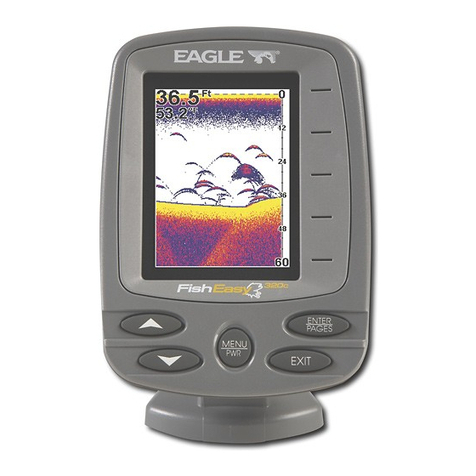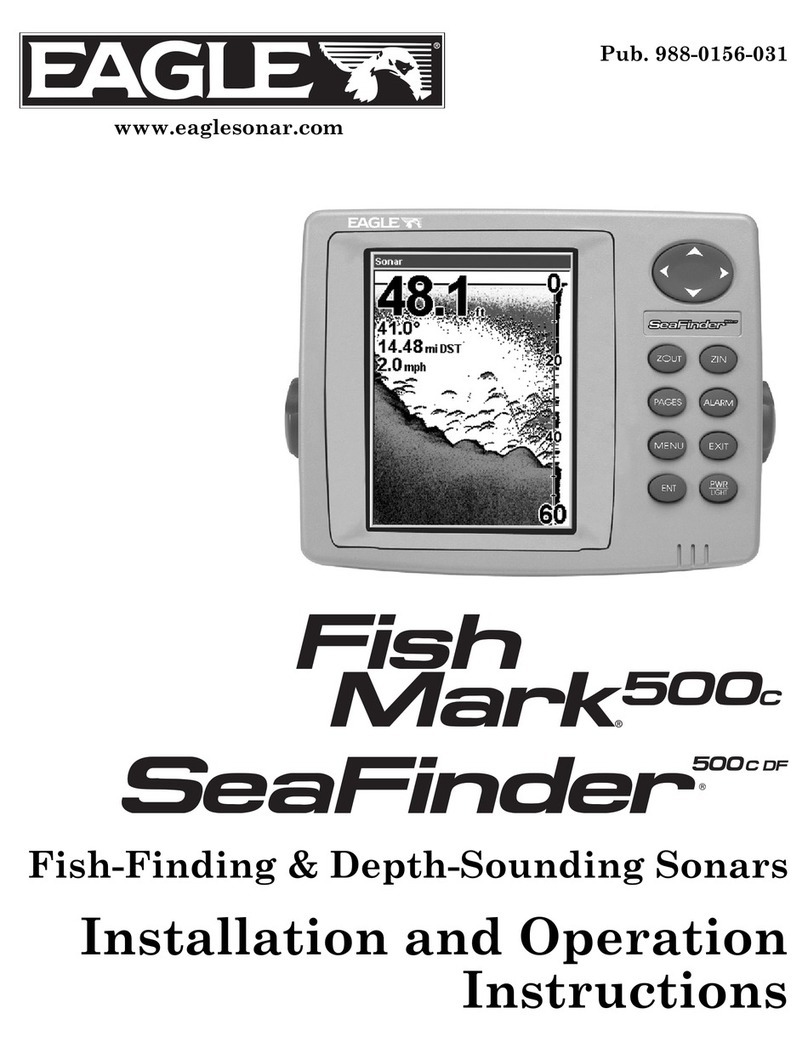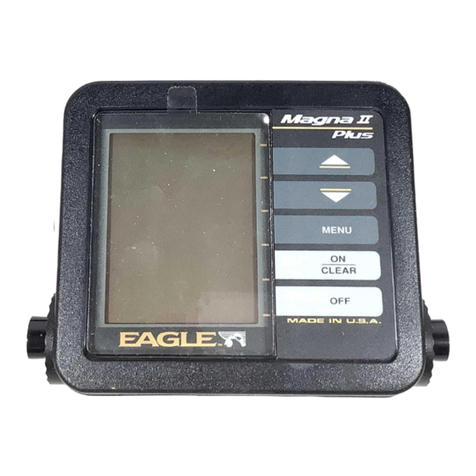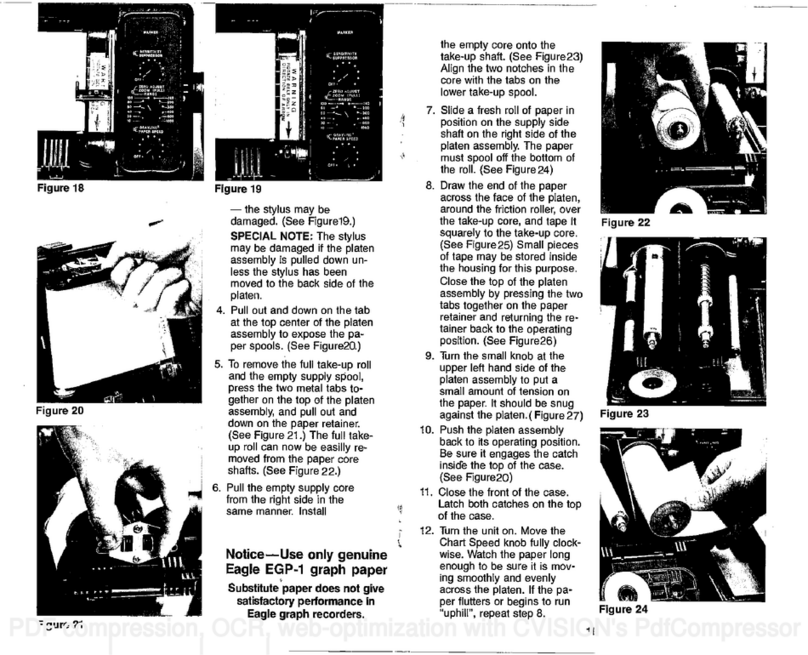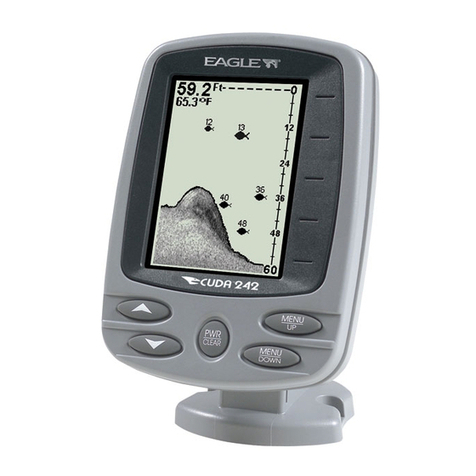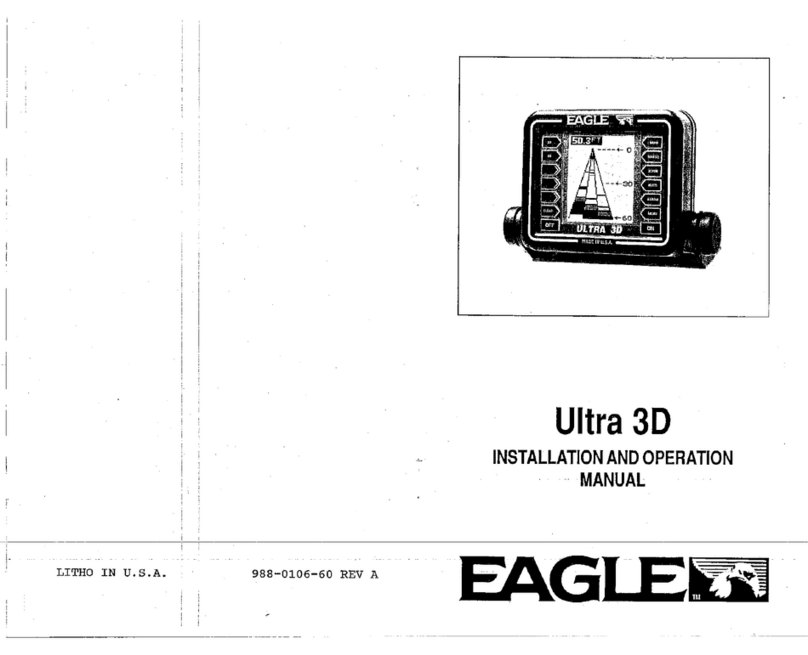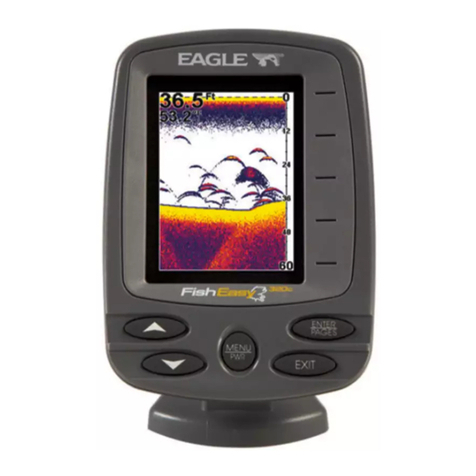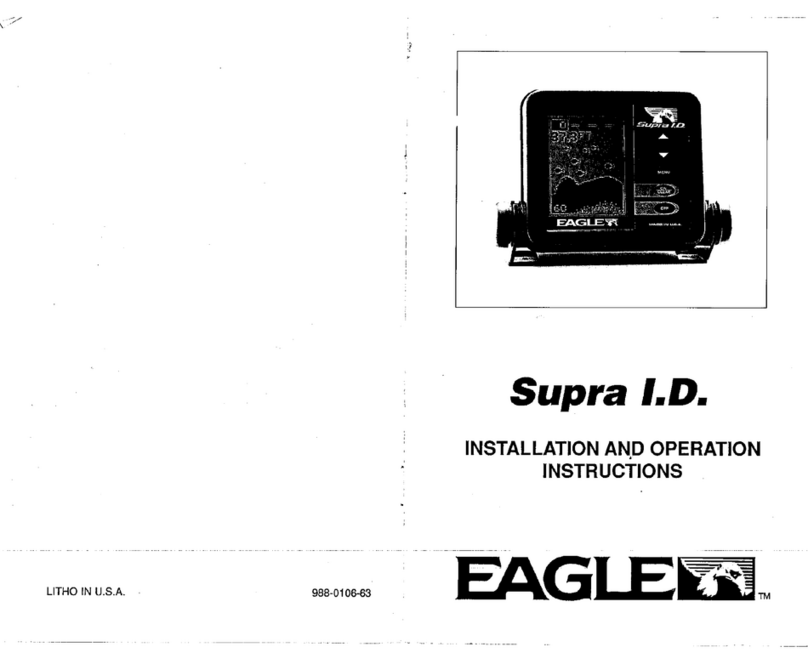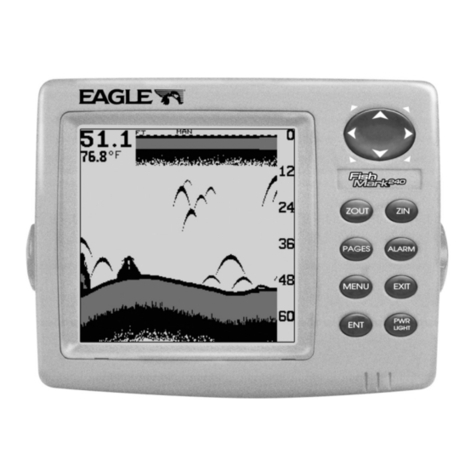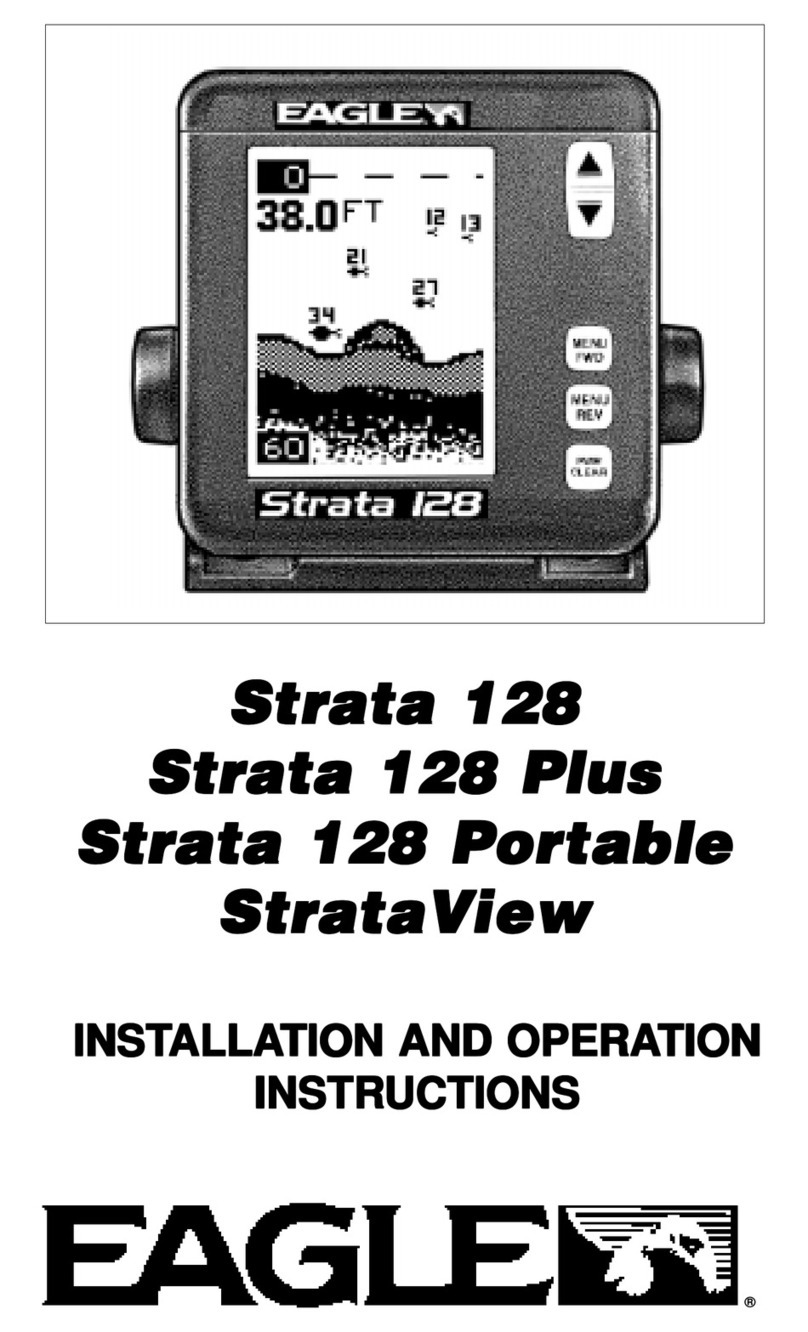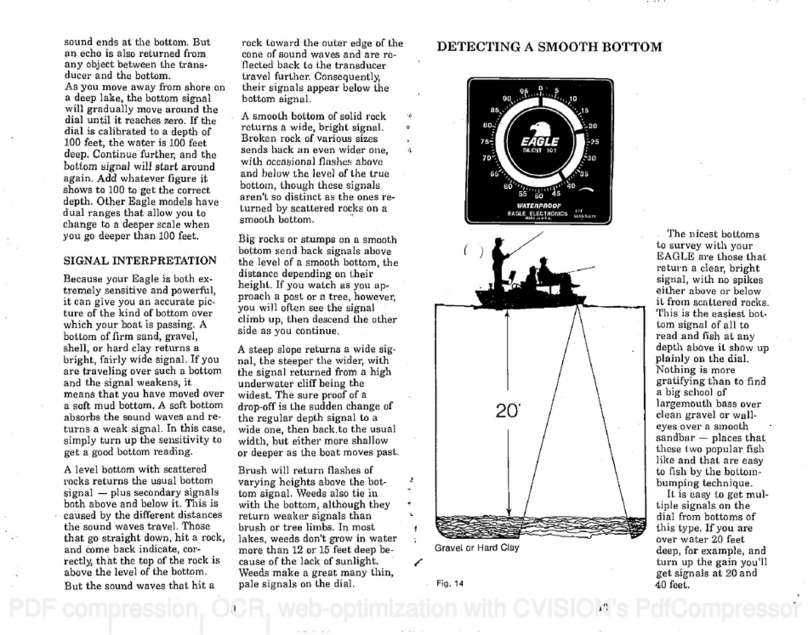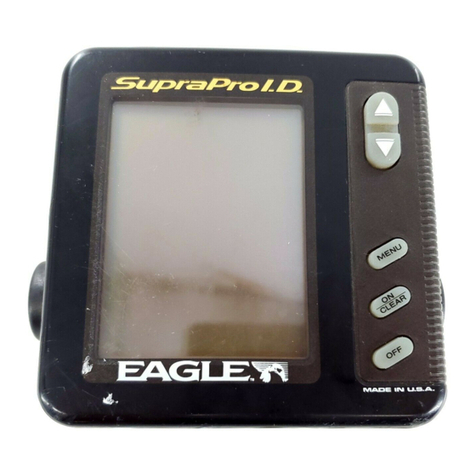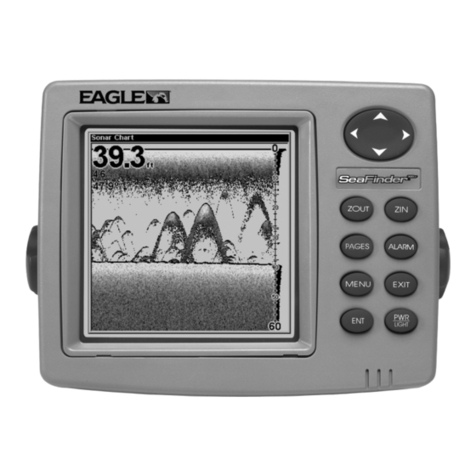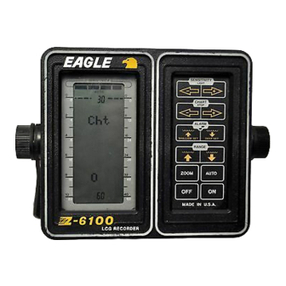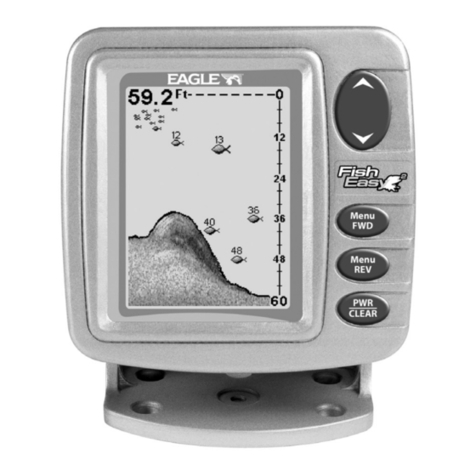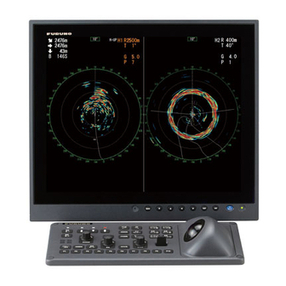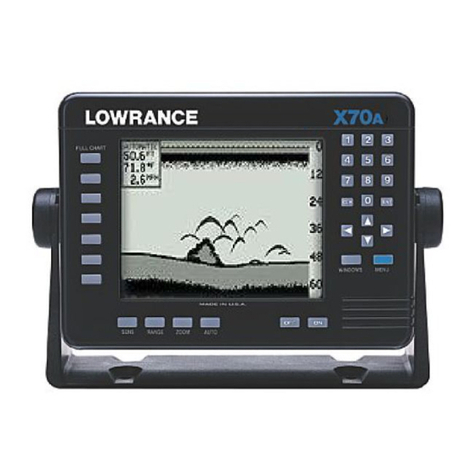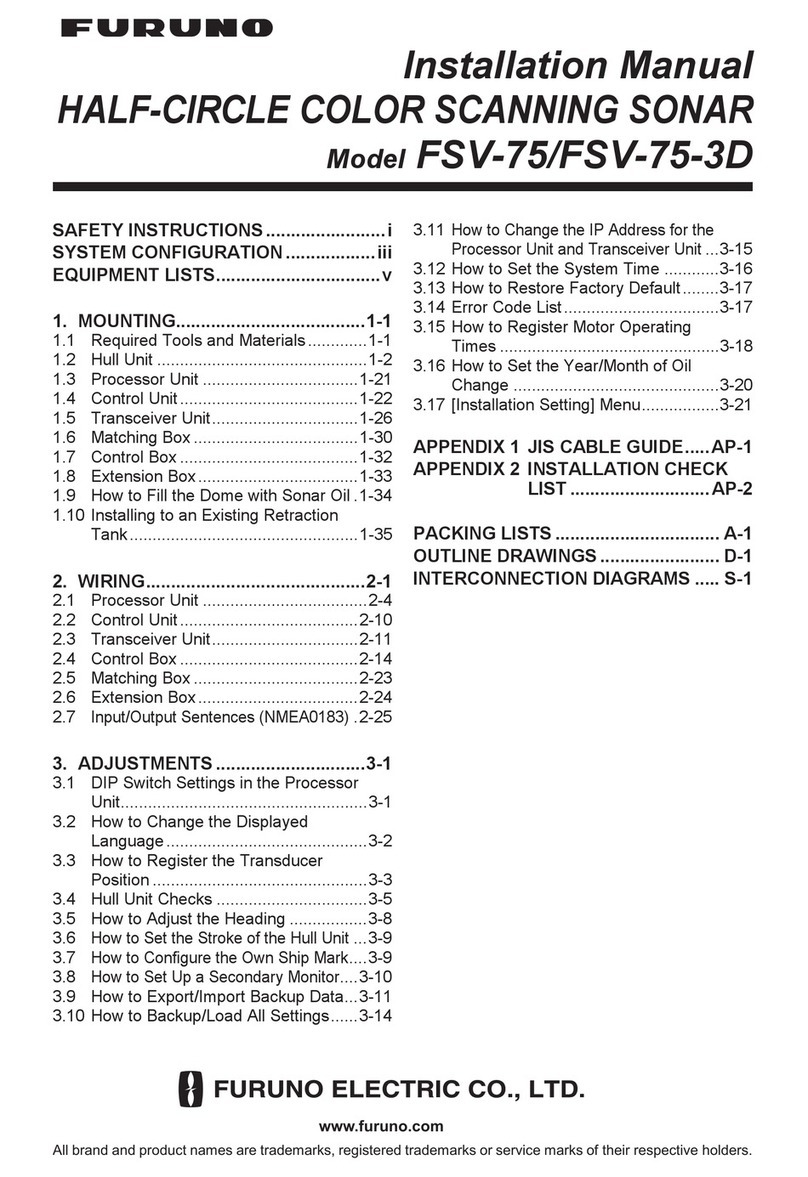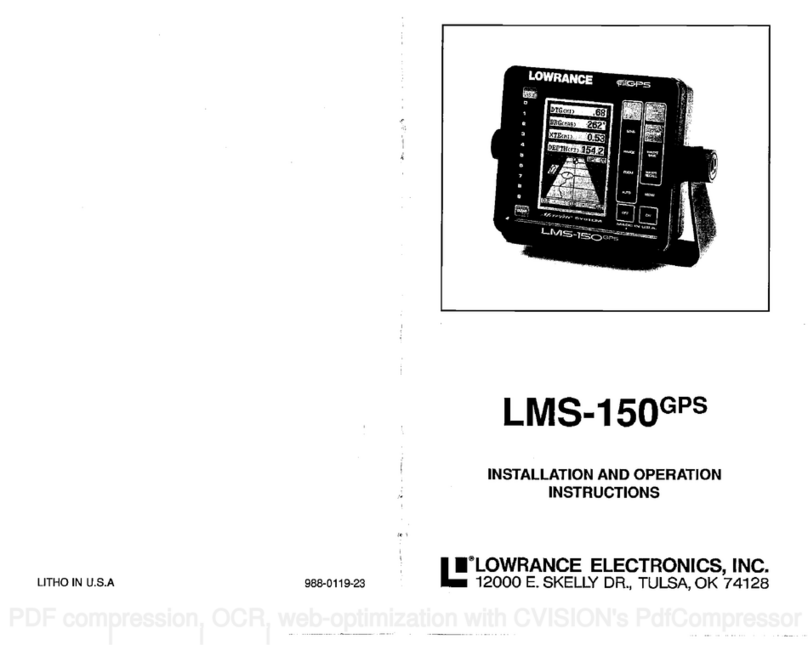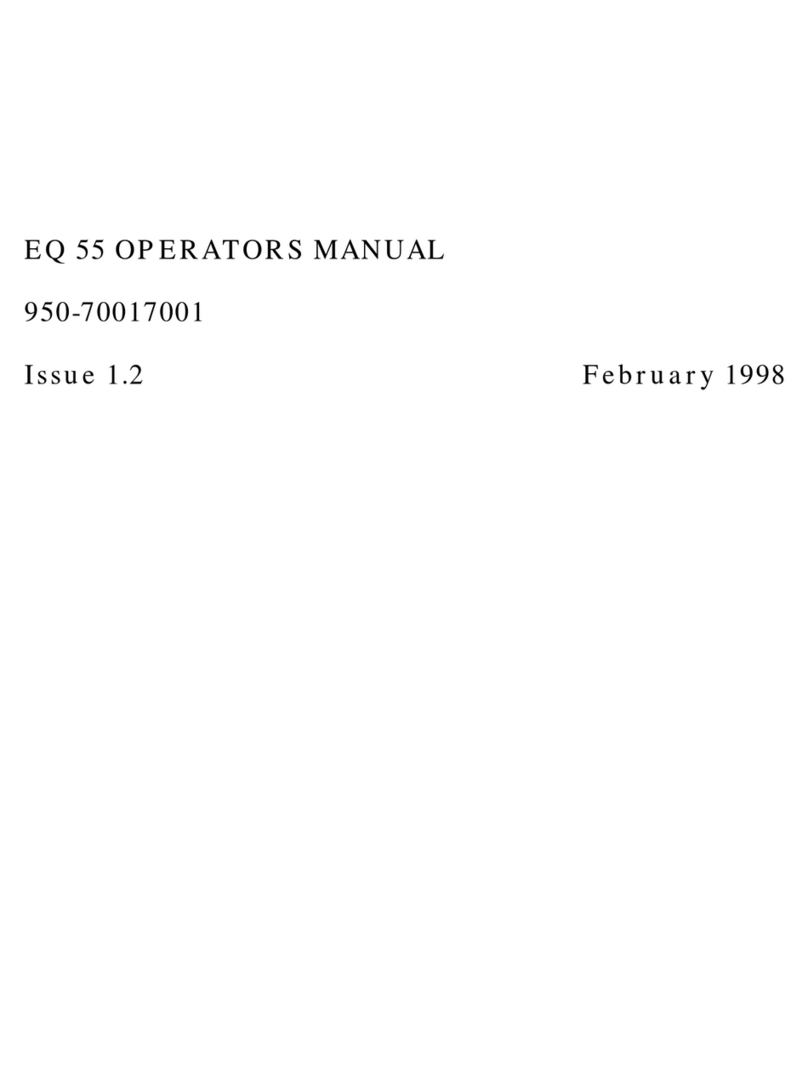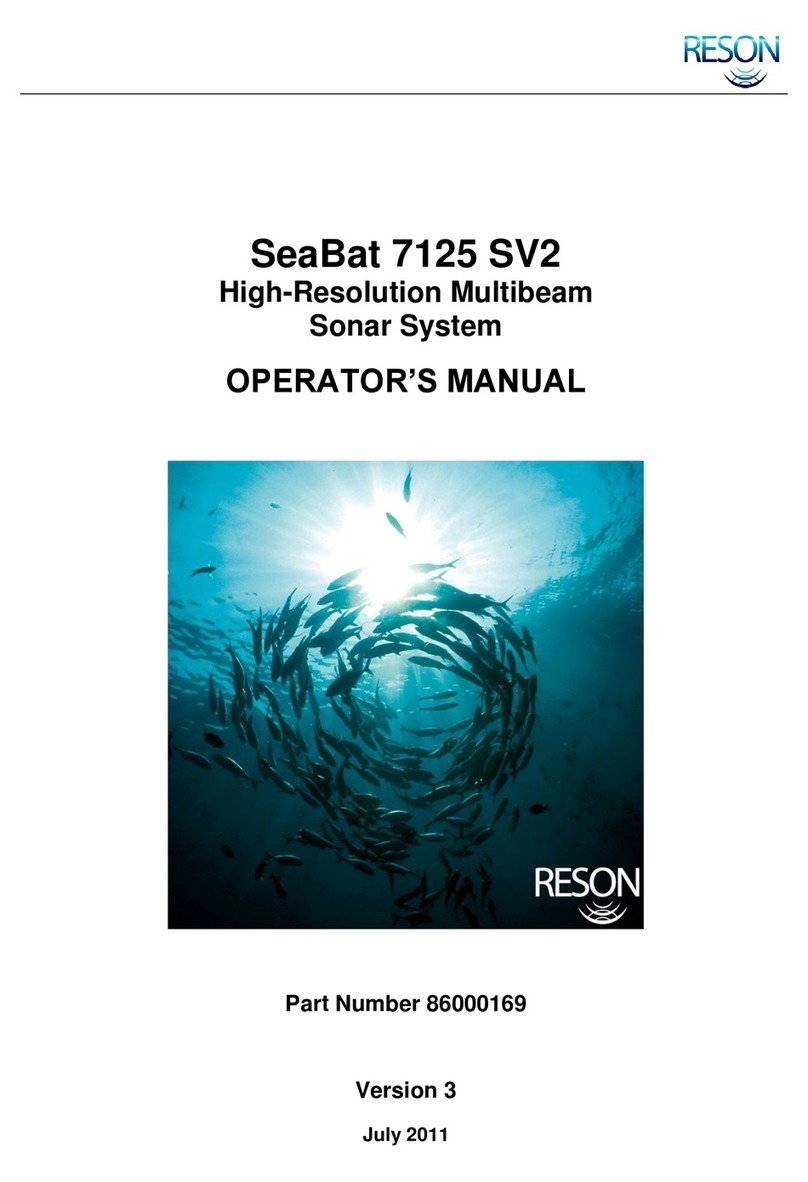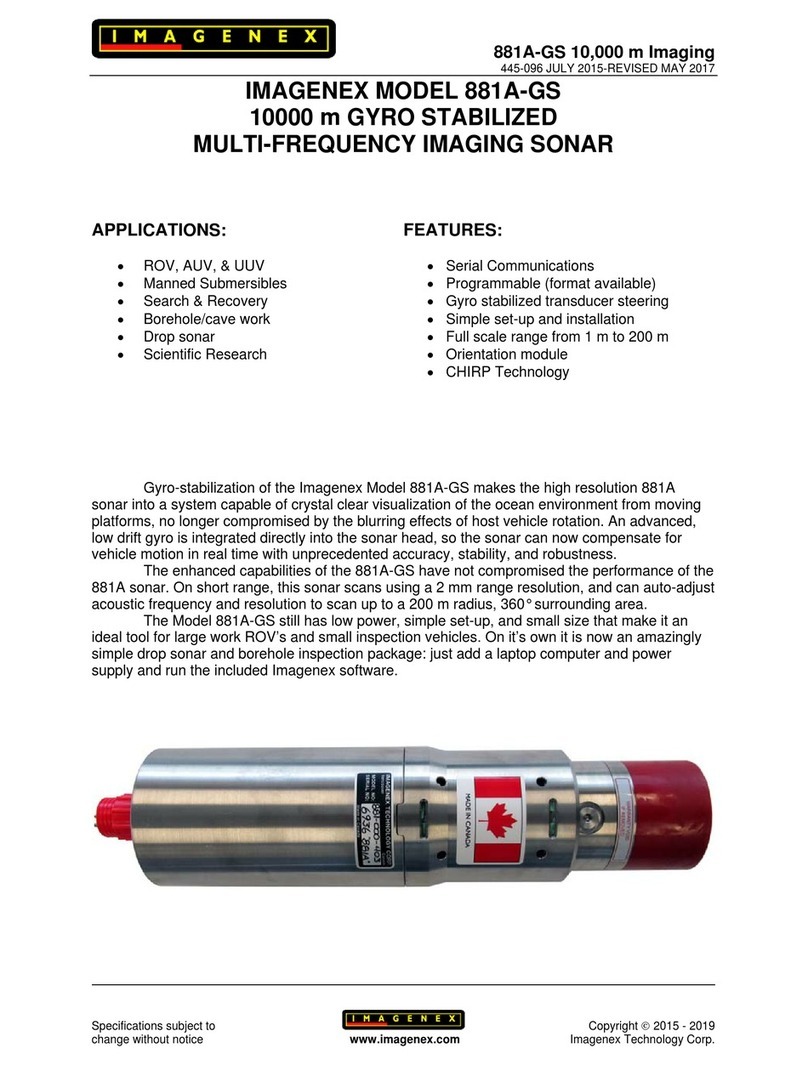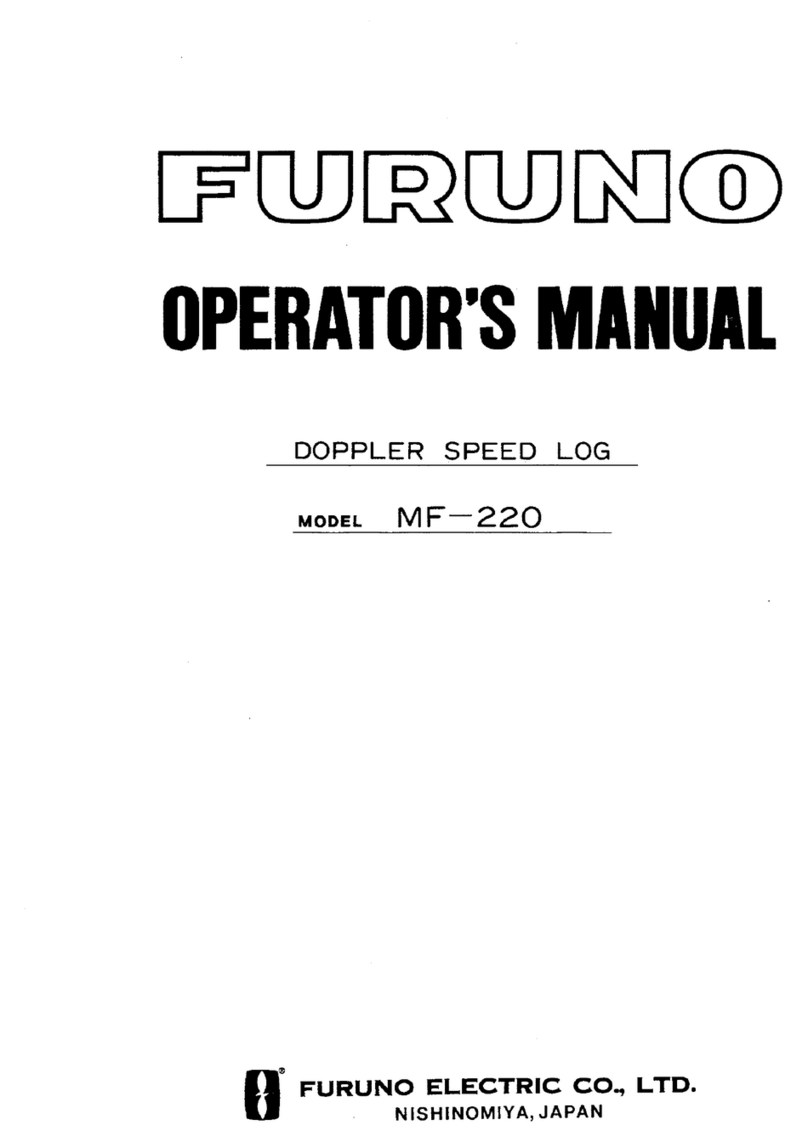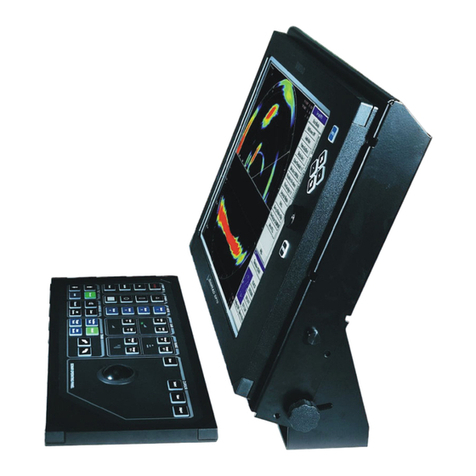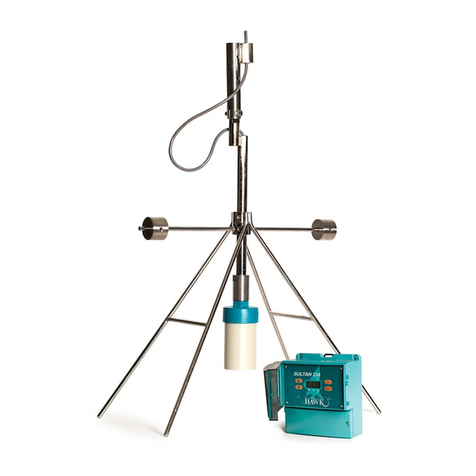
1. INTRODUCTION
The EagleZ-15 is ahighly
sophisticated recording depth
sounder. Thanks to amicro-com-
puter,the Z-15 can do more than
anyothersonar unitin itsprice
range plusmanythatcostmuch
more, Thanks toawaterproof key-
board, fullcontrol ofthesystem is
atyourfingertips tomeet the
changing demandsofvarying bot-
tomconditions, water depth, and
boatspeed. You canselectthe
unit'ssensitivity,suppression level,
upperand lower depth range, pa-
perspeed, GRAYLINE, and many
morefeatures. The patented
Eagle variable suppression
system
combined with the new
Discrimination feature notonlyfil-
ters outfalsesignals withoutdis-
torting
the real ones, but is
synchronized withthe GRAYLINE
functiontoprovide clearsignals
underallconditions.
2. HOW IT WORKS
When theunitisturned on, an
electronically regulated motor
drivesalightweight beltlocatedat
the right edge oftherecording pa-
per.The stylus is attached tothis
belt.When thestylus is atthetop
ofthepaperasmall mark is
made.Thisiscalled thezero
mark, andrepresents thesurface
ofthe water.Thestyluscontinues
tomove downthe edge ofthe
paperwhilethe sound pulse is
traveling through thewater, and
whenanechois detected, the sty-
lus makes anothermark onthe
paper. Thedepth oftheobject
whichreflected the echo canbe
readin feetby comparing its loca-
tiononthe paper tothe depth
scale printed onthe paper.
Thepaperspeed iscontrolled
by avariable speedmotor. During
onerevolution ofthestylusbelt, a
verynarrowmark will be made by
theflexible stylus, butthepaper
will moveasmall amountbefore
thenextrevolution. Each mark will
blend intothe one before so that a
composite "picture' ofthetarget
will be made, onetinymarkat
atime.
Due tothe many featuresthat
this unithas,this manual hasthe
operation sectionsplitintotwo
parts. Thefirst sectionisentitled
"BasicOperation" and covers
everything that is absolutely
necessary tousetheZ-15 in a
widevariety
ofsituations. Itwilltell
youhow tousethebasiccontrols
-Sensitivity, Suppression, Paper
Speed, GRAYLINE, Range, plus a
fewspecial functions. Thissection
will be adequate for most situa-
tions.However,onceyou have
mastered the basic operation of
the Z-15,youmaywishtotry
some ofthefeatures described in
theSuppressor control turned
down tominimum whenlooking
forfish,
However,itis helpful sometimes
to have longerpulse
width when
resolution is not a concern. When
using asonarin deeper water, itis
easier forthe unittodetecta long-
erpulsecoming backfromthe
bottom orfromfish. Thisiscalled
'Probability
ofEchoDetection".
Theprobability ofthe unitbeing
ableto detect an echo returning
from deep water isdiminished be-
cause thefurtherthesound pulse
hasto travel, the weakeritbe-
comes. By broadeningthepulse
length, inessence, a larger signal
istransmitted andit iseasierfor
the receivertodetectit.
Forthisreason, themicro-com-
puterin the Z-15 automatically
increases the initialpulselength of
the unitas deeperlowerlimitsare
setby the opQrator. (Note: Initial
pulse length isthepulselength of
the unitwhenthe Suppressor con-
trol isturned to minimum.)
INITIAL
TRANSMIT
PULSE
WIDTH
(micro-seconds)
110
130
160
200
From 210 feet to 600feet, the
initial pulselength increases atthe
samerateasthedepth.Forex-
ample, with the LOWER LIMIT set
to 260 feet, the initial transmit
pulselength would be260 is. If
the LOWER LIMITisset to 390
feet, the initial transmitpulse
would be390 ps. Finally,from
600feet and below,the initial
pulselength remainsat 600
micro-seconds.
Thetransmitpulse length can
be increased fromthe initialpoint
at anytime by rotating the Sup-
pressor control clockwise. The
maximum amountofpulselength
addedtothe initial transmitter
pulselength is approximately 800
micro-seconds. In otherwords, if
the LOWER LIMIT issetto 420
feet, and theSuppressor control is
rotated to the maximum position,
thetransmitter pulselength would
be 1220 micro-seconds. (420
initial + 800 = 1220.)
Earlier, we talked
about therela-
tionship
between pulselength and
targetseparation. As pulse length
increases, targetseparation or
resolution is degraded. However,if
the pulse width isdecreased, res-
olution becomes much better.
The Z-15 allowsyoutotake
advantage ofthis fact by making it
possible tooverridethe initial
transmitter pulse length setting
fromwhatthe micro-computer
selects according totheLower
Limit.
Theihitialtransmitter pulse
length can beset from 30 ps to
200Qsby entering it onthe key-
board. By setting theinitialtrans-
mitter pulsewidth to 100 ps,a
three inch resolution isobtained,
50 isis equivalent to aninch and
a half,and30 isinitialtransmit
pulse length isequal toone inch
resolution! No othergraph re-
corderin the market todaycan
give youthisfeature. Aftersetting
theinitialtransmitter pulselength,
thesuppressor control canstill be
used to cancel out noise by in-
creasing the pulse length orthe
Discrimination function described
below canbeusedtoeliminate
noise and still have good
Figure 1
LOWER
LIMIT
(feet)
10
20
30
40-200
f I
I DRIVE
%,ir_!.[ BELT
GRAPH r j5TYLU5
PAPER
PAPER (LE,PuLLEV
TRAVEL 2 19
PDF compression, OCR, web-optimization with CVISION's PdfCompressor
